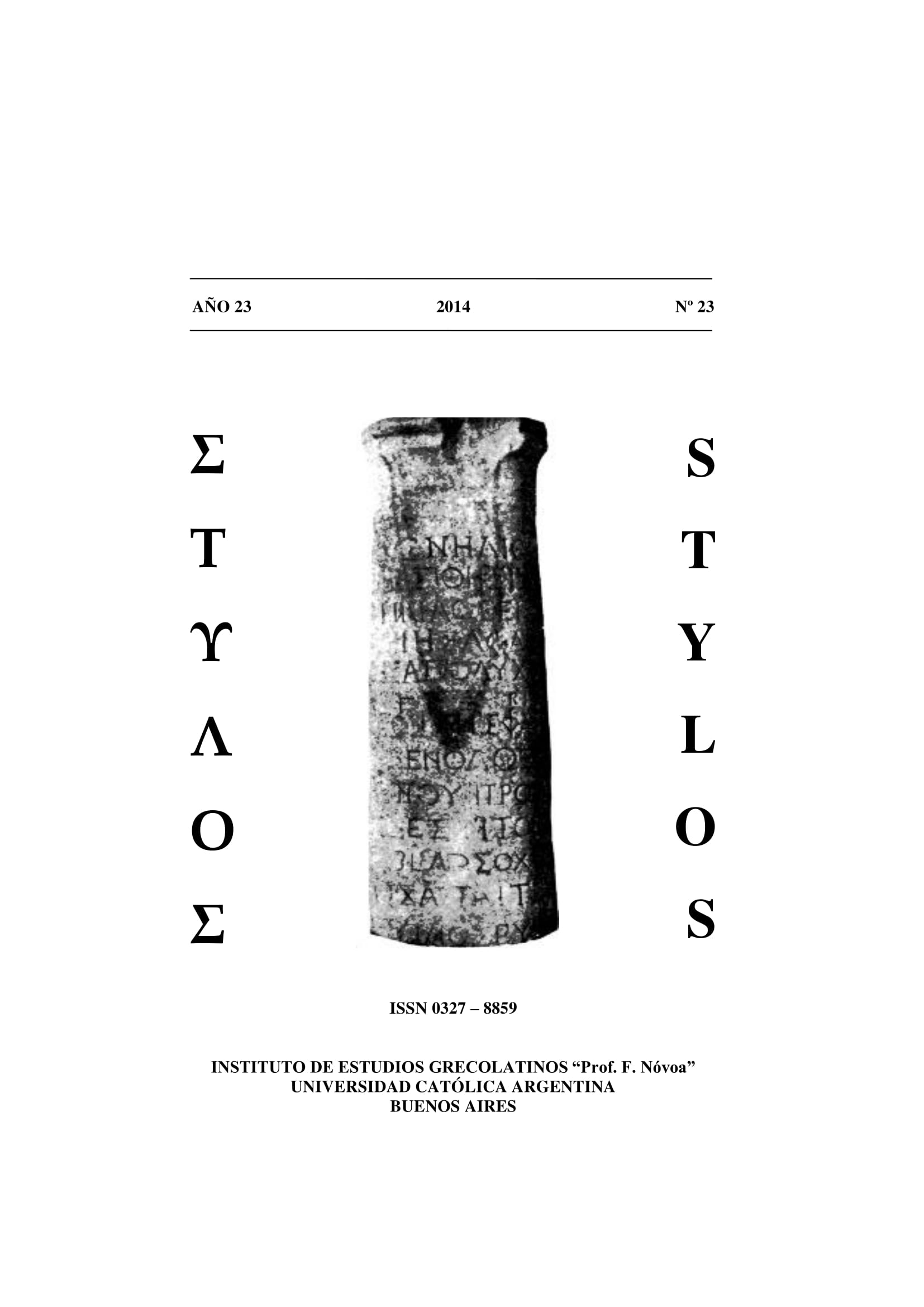LA TRADUCCIÓN DEL ARS GRAMMATICA DE CONSENCIO: PROBLEMAS Y CONSIDERACIONES
Keywords:
ars grammatica – grammatici latini – Consentius – technical translation.Abstract
It is well known by the literature the many difficulties involved in the translation of an ars grammatica. However, according to Codoñer (2011: 448), the secret for a good translation and, furthermore, for a technical translation, a “secret known by everyone but voluntarily ignored (…) is simple in its assertion: to know the text by all its aspects”. Nevertheless, to gain total understanding of an ars grammatica is a difficult task for several reasons, all of which are somehow interwoven: the incomplete knowledge on the nature of the many artes gramaticae, and the few existing translations into modern languages. The aim of this paper is, therefore, to address the various questions, difficulties, and problems that stem from translating an ars grammatica, specifically that of Consentius (s. V), as well as to suggest some solutions and answers.
Downloads
References
BIBLIOGRAFÍA
EDICIONES
BARWICK, K. (1925), Flavii Sisipatri Charisii artis grammaticae libri V (reimpr. con addenda et corrigenda de F. Kühnert, 1964), Leipzig.
BONNET, G. (2005), Dositheé. Grammaire latine, París.
DE NONNO, M. (1982), La grammatica dell’ «Anonymus Bobiensis» (GL I 533-565 Keil). Con un’appendice carisiana, Roma.
HOLTZ, L. (1981), Donat et la tradition de l’enseignement grammatical. Étude sur l’ Ars Donati et sa diffusion (IVe –IXe siècle) et édition critique, París.
KEIL, H. (1961) (= 1857-1870), Grammatici Latini, 8 vols., Leipzig.
NIEDERMANN, M., (ed.) (1937), Consentii Ars de barbarismis et metaplasmis. Victorini fragmentum de soloecismo et barbarismo, Neuchâtel.
BIBLIOGRAFÍA CITADA
Ax, W. (2011), Quintilians Grammatik ("Inst. Orat." 1,4-8): Text, Übersetzung und Kommentar, Berlin.
BARATIN, M. (ed.) (2010), Priscien. Grammaire. Livre XVII - Syntaxe, 1. Texte latin, traduction introduite et annotée par le Groupe Ars Grammatica, París.
BARATIN, M. (ed.) (2013), Priscien. Grammaire, Livres XIV-XV-XVI: Les invariables. Texte latin, traduction introduite et annotée par le Groupe Ars Grammatica. Histoire des doctrines de l'Antiquité classique, París.
BARWICK, K. (1922), Remmius Palaemon und die römische Ars grammatica, Leipzig.
BÉCARES BOTAS, V. (1985), Diccionario de terminología gramatical griega, Ediciones Universidad de Salamanca.
CODOÑER, C. (2011), Reseña de GROUPE ARS GRAMMATICA (ed.) (2010), Priscien. Grammaire. Livre XVII - Syntaxe, 1. Texte latin, traduction introduite et annotée par le Groupe Ars grammatica animé par BARATIN, M. et composé de BIVILLE, F., BONNET, G., COLOMBAT, B., GARCEA, A., HOLTZ, L., ISSAEVA S., KELLER, M. y MARCHAND, D., Paris, en Exemplaria Classica 15, pp. 447-450.
DAMMER, R. (2006), “A Rhetorical Grammar. C. Iulius Romanus, Introduction to the Liber de Adverbio as Incorporated in Charisius' Ars Grammatica II.13 by C. Iulius Romanus, Dirk M. Schenkeveld”, Gnomon 78. Bd., H. 1, pp. 27-33.
DAMMER, R. (2001), Diomedes grammaticus, Trier.
DEZOTTI, L. C. (2011). Arte menor e Arte maior de Donato: tradução, anotação e estudo introdutório. Disertación de Maestría, Faculdade de Filosofia, Letras e Ciências Humanas, Universidad de São Paulo, São Paulo. Recuperado 2014-04-18, de http://www.teses.usp.br/teses/ disponiveis/8/8143/tde-22092011-161749/.
ECO, U. (2008), Decir casi lo mismo, Barcelona.
GARCÍA YEBRA, V. (2006), Experiencias de un traductor, Madrid.
GUTIÉRREZ GALINDO, M. et al. (2013), DECOTGREL, Diccionario electrónico concordado de términos gramaticales y retóricos latinos, Cilengua.
JÄGER, G. (1990), Einführung in die Klassische Philologie, München, 3era. Edición.
LAW, V. (2003), The history of Linguistics in Europe. From Plato to 1600, Cambridge.
LENOBLE, M. SWIGGERS, P. y WOUTERS, A. (2001), “Étude comparative des dénominations de catégories grammaticales dans les textes artigraphiques latins de l’Antiquité”, en COLOMBAT, B. ; SAVELLI, M. (eds.), Métalanguage et terminologie linguistique. Actes du colloque international de Grenoble, Peeters, Lovaina-París-Sterling, pp. 275-291.
LINDSAY, W. (1916), “The Latin Grammarians of the Empire”, AJP 37, N° 1, pp. 31-41.
LUHTALA, A. (2005), Grammar and Philosophy in Late Antiquity: a study of Priscian sources, Amsterdam.
SCHAD, S. (2007), A Lexicon of Latin Grammatical Terminology, Pisa – Roma.
SCHÖNBERGER, A. (2009), Die Ars maior des Aelius Donatus : lateinischer Text und kommentierte deutsche Übersetzung einer antiken Lateingrammatik des 4. Jahrhunderts für den fortgeschrittenen Anfängerunterricht; Frankfurt am Main.
STOCK, CH. (2005), Sergius (Ps.-Cassiodorus) Commentarium de oratione et de octo partibus orationis Artis Secundae Donati. Überlieferung, Text und Kommentar. Sammlung wissenschaftlicher Commentare. München/Leipzig.
SWIGGERS, P., WOUTERS, A. (1999), “Le noms ad aliquid et aliquid qualiter chez les grammairiens latins”, en BARATIN, M., MOUSSY, C. (eds.), Conceptions Latines du Sens et de la Signification, Paris, pp. 127-142.
SWIGGERS, P., WOUTERS, A. (1996), “Content and context in (translating) ancient grammar”, en SWIGGERS, P., WOUTERS, A. (eds.) Ancient Grammar: Content and Context, Leuven, pp. 123-161.
TAYLOR, D. J. (1991), “Latin declensions and conjugations: from Varro to Priscian”, Histoire Épistémologie Langage 13, fasc. 2, pp. 85-109.
URÍA, J. (2011), “Los límites del léxico especializado: la terminología de los gramáticos latinos”, en Cuadernos del Instituto de Historia de la Lengua 6, pp. 117-137.
URÍA, J. (2009), Carisio. Arte Gramática. Libro I, Madrid.
Downloads
Published
How to Cite
Issue
Section
License






